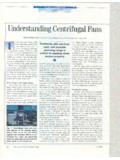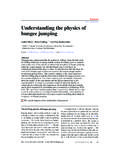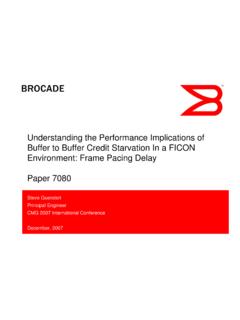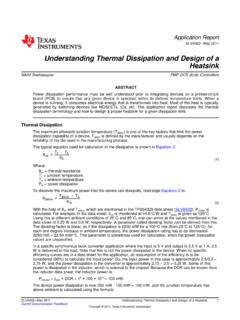Transcription of Understanding the ECU - FES AUTO
1 62 MC2 Magazine Summer 2006tech FAQsThere is no escape from the computer in the modern car. Many of my genera-tion (old and creaky, or is that old and cranky?) lament the newfangled electronics permeating the modern car, but I like them. While it is true that carburetors in the old days were up to the job of supplying an air/fuel mixture to the engine, they were a collection of compromises. When tuning the carburetor you had to decide which you were willing to give up: power, fuel efficiency, or low emissions. You couldn t get all three.
2 To get all three, computer-controlled fuel injection is required. If one is to really get the most that a engine has to offer, a computer is a necessary evil. That brings us to that component on the modern automotive engine called the Engine Control Unit or ECU is quite a capable device. It can run the engine much closer to the proverbial edge, where more power is to be found, and do it safely. This is what makes our little cars so capable. The MCS is rated at 100 horsepower per liter, and the JCW cars have almost 130 hp/l.
3 These are large numbers indeed. Compare that to the 2006 Z06 Corvette, which makes only about 70 hp/l, about the same as a Mini Cooper. That s not too shabby. On the Mini, the ECU is manufactured by Sie-mens. Unfortunately, Siemens, BMW and Mini don t provide any information about exactly how this unit works. Not to worry, however; in the quest for more power, some pretty smart people have been able to infer most of what we need to know about how the Mini ECU works. In this article, we ll spend some time learning about the ECU and engine manage-ment.
4 In the next issue, we ll look at some of the options for modifying the ECU to improve perfor-mance, and some of the pros and cons of doing so to help you make an informed decision about whether More Power is right for you and how to get it. Making Power out of Gasoline and AirIn its most basic form, an internal combus-tion gasoline engine works by mixing gasoline with air, compressing it in the cylinders, and then igniting it with a spark. In the days before the ECU, the gas/air mixture was controlled by the carburetor, and ignition timing was con-trolled by the distributor.
5 These two compo-nents had been optimized over the decades to perform reasonably well. However, in the late 1960s, emissions and ef-ficiency regulations were enacted that required automobiles to run cleaner and produce better gas mileage. These regulations are the primary cause for the widespread adoption of computer-controlled fuel injection and why does an engine require fuel injection in order to run cleanly and ef-ficiently? To answer that, we have to learn a bit about air/fuel mixtures, power, and emissions. Gasoline consists of molecules containing carbon and hydrogen (and a bit of other stuff added to keep valves clean and so forth).
6 When the hy-drocarbon molecules are burned in the cylinder, pressure is created that pushes down on the piston to give the engine its go. If you don t have enough oxygen, you can t burn all the gas, and you loose power. Conversely, if you have too much oxygen, it takes the place that gas could occupy, and you loose power. This is a gross oversimplification, but it does illustrate the notion that there is a correct mixture, or ratio, of air and fuel to create the most efficient burn of the gasoline. For gasoline (the number is different for different fuels) this number is to 1, and is referred to as ideal stoichiometry (don t worry, I won t use that word again).
7 Grams of air are required to completely burn one gram of gasoline. Some might guess that this is the end of it; all one has to do is design a system that holds this ratio constant, and you re done! Unfortunately, engines, like most things in life (especially the fun ones) are never really so simple. For a lot of reasons, the best power comes on the rich side of the air-fuel mixture (at about to 1). And to make matters worse, the best economy comes on the lean side (at a bit above 15 to 1) as illustrated in Figure 1.
8 Grrrr! It s getting more And we haven t even considered The Bad ThingsWhen the engine runs rich, there isn t enough air to burn all the gas. This means that the engine will emit a lot of hydrocarbons (usually referred to as HCs, essentially unburned fuel, a signature of poor fuel economy, and a contributor to smog) and carbon monoxide (CO, a poi-sonous gas). Unfortunately, we can t just run a little too lean because the NOx (oxides of nitrogen, a component of smog) skyrockets past what the catalyst can handle if the mixture gets even a little bit lean!
9 These changes are shown graphically in Figure 2. Understanding the ECUWhat it does and how it Matt Richtertechnical editorThe ECU exposed: The ECU is next to the air intake. With the cover removed, the wires going into the engine compartment can be seen at the front, and the connector into the passenger compartment at the rear. The computer itself is just below the Magazine Summer 2006 63It s this fine window of low emissions that requires the use of com-puter controlled fuel injection. No mechanical system can sense what the car is doing fast enough to provide real time tuning of the engine so that the engine can be kept in the range where emissions can be kept at low levels.
10 No matter what one thinks of government regulation, the emissions standards for cars are what have driven the adoption of fuel injection. But it s not all bad, as without fuel injection, we wouldn t have the power at our disposal that our little engines can let loose when we push the go pedal!There are several types, or approaches, to fuel injection, and they dif-fer in how they measure the demand of the engine for air, and hence, fuel. While we won t cover them all here, the Mini engine management functions via a control method called speed-density.







